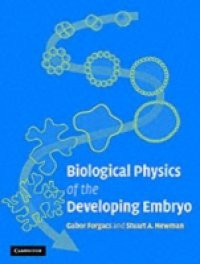During development cells and tissues undergo changes in pattern and form that employ a wider range of physical mechanisms than at any other time in an organism's life. This book shows how physics can be used to analyze these biological phenomena. Written to be accessible to both biologists and physicists, major stages and components of the biological development process are introduced and then analyzed from the viewpoint of physics. The presentation of physical models requires no mathematics beyond basic calculus. Physical concepts introduced include diffusion, viscosity and elasticity, adhesion, dynamical systems, electrical potential, percolation, fractals, reaction-diffusion systems, and cellular automata. With full-color figures throughout, this comprehensive textbook teaches biophysics by application to developmental biology and is suitable for graduate and upper-undergraduate courses in physics and biology.

